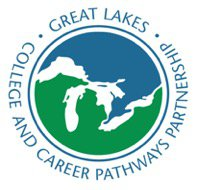
In 2016, The Joyce Foundation wanted to answer the question, how can we increase educational outcome and economic mobility for students furthest from opportunity? To answer this question the Joyce Foundation launched the Great Lakes College and Career Pathways Partnership. Soliciting the expertise of ConnectED: the National Center for College and Career, Education Systems Center and Jobs for the Future to support four communities: Central Ohio, Madison, WI, Rockford, Il and the Northwest Suburbs of Chicago, Il. Over the course of five years these communities worked diligently to create college and career pathways that increased student access to dual credit, industry credentials, integrated curriculum and work-based learning all with the goal of increasing both equity and access. Over the past 5 years, we learned a great deal about what it takes to develop a community-wide approach to college and career readiness. Here are some of our key findings:
- A Community of practice accelerates the pace of change. The GLCCPP Community of practice emphasized both the importance of local team cross-systems development and cross-community learning, sharing and problem-solving. The CoP was designed to be valuable to both the individual professional and the team’s collective pathways’ efforts. As Krista Paul, D214 stated, ““The Great Lakes CoP (was) the space where we could finally work through some of those tough issues that kept us from moving forward.”
- Collecting, disaggregating, and analyzing data is critical but not enough without collective action. Who are we serving in pathways? Who aren’t we serving? Who is earning important industry credentials and degrees and who isn’t? These questions are essential for understanding equity gaps. Quantitative data helps us further examine our systems’ gaps and inequities. However, data collection and analysis must be answered by taking action on removing barriers, changing policy and implementing new practices. Without action, we merely admire the problem.
- Gaps revealed by data do not reflect the skills and abilities of students, but rather the strengths and deficits of how the system is designed. Too often we see gaps between white, brown, and Black students as a problem with the student. It’s important to remember our systems are designed to get the results we are getting. The GLCCPP communities redesigned their policies, structures, systems and practices in order to increase access to dual credit, work-based learning and rigorous coursework.
- Cross-System Collaboration is essential to change outcomes for young people. While there are policy, structure, and practice nuances to the K–12 system, higher education, and workforce systems; students travel through all three systems. Making changes in one system has implications in another. We must work together to open doors not just within the individual system we work but across systems.
To learn more about the GLCCPP learning and results please visit:
)